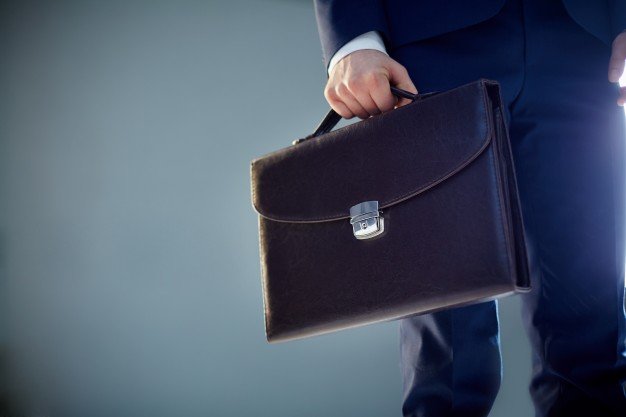The tech revolution has brought with it a revolution in business dress codes. No longer does a tailored suit necessarily signify competence. In fact, were your tech guru to turn up in a shirt, tie and suit you’d probably feel very anxious that this person wasn’t the real deal. That said, that’s ok in a Silicon Valley boardroom won’t necessarily go down well in the office of a New York financial advisor. The old dictum that ‘The more you deal with a client’s money, the more conservatively you should be dressed, ’still carries some weight. Dress codes are crucial, they are subtle, shifting communicators. Get them right and your client will feel confident in your competence, get them wrong and an impeccable pitch may leave your client with niggling doubts.
Accessories are an important part of your appearance and the impression that you make: they have a practical function but are also objects which signify style and quality and reassure your client that you are successful and have good judgment. Times change and our times change fast and that’s why a touch of tradition is so reassuring. So, here’s a mix of old and new which will serve you well.
An understated watch of quality
It’s old fashioned technology, but so is the wheel. You’ve got the time on your phone and your tablet, but a watch remains the most convenient way to track time and when you are running to a tight schedule it is a crucial accessory. It is of course far more than a practical tool, it’s a stylish and attractive adornment. The simpler the better, a slim body and a clean face, uncluttered by knobs and dials. A diver’s watch is great for divers but not for the boardroom. A watch can also signify affluence, if you are wearing a Rolex, it is a clear indicator of both taste and affluence. That doesn’t mean that you need to spend thousands on a wristwatch, there plenty of great stylish watches out there for under $200 such as the Daniel Wellington Classic Cornwall or the Skagen Ancher.
A Quality Pen
There will be times when a pen is required and when an important document is being signed how could you possibly use anything other than a quality pen. A fountain pen is a wonderful thing but it’s for personal use and there’s always the risk of ink where you don’t want it, so a quality ball pen is an obvious choice. The Montblanc is unquestionably the Rolls Royce of pens but there are plenty of other pens which are pleasing to look at and a pleasure to use.
Understated cuff links and a leather belt
Details matter and although these accessories may only be glimpsed by your client, they speak volumes about your style and good taste.
A Leather Bag
The rise of veganism might persuade you that you should opt for some alternative fabric but if you are concerned about the environment then a leather bag, which will last a lifetime, is a better choice than synthetic material, full of toxic chemicals, which will need replacing in a few years. A leather bag is a thing of beauty and a practical and reliable accessory. A briefcase is unwieldy and outmoded, much better to go for something which allows you to be hands-free, such as the Messenger bags or Satchels from MAHI, both of which are big enough to take your laptop, electronics accessories and paperwork. A satchel or messenger bag also works well as a weekend bag or cabin bag, so they are great for those short notice trips.
A Business Card
Remember that scene from ‘American Psycho’ where the Christian Bale character reveals his new super stylish business card? Well despite a world of cyber-everything here’s a traditional business accessory that still has its place. A stylish small card is more memorable than a note on a phone or an email. There’s an important moment of human interaction when you hand that card over and the fact that it’s a physical experience makes it more memorable. Do not produce your card from the depths of some scatty, stuffed billfold but from a slim leather wallet.
A Lint Roller
Your presentation was outstanding, but all your client noticed were the fibers on your suit. A lint roller tucked away in that Messenger bag means that you can give yourself a quick once over and feel confident that you are spick and span.
Dopp Kit
In a global marketplace, travel has become part of a businessman’s working life. Trips abroad are often short and at short notice, so you need to be ready to travel at any time. A Dopp kit which you keep packed and ready to go means that you’ve only got one object to remember, instead of arriving at your hotel to discover that you haven’t packed a razor. A Dopp kit enables you to keep all your toiletries in one place and is a compact and convenient storage accessory.
Electronics Organiser
It’s undignified and unprofessional to be seen to be scrabbling about in your bag for a lead or a charger while everyone waits for your presentation. Make sure that you know where everything is by storing it in an electronics organizer, that way you won’t leave anything behind, and you’ll know exactly where everything is.
Portable Charger
Flat batteries have put pay to many a promising presentation. Can you really be trusted with a client’s account if you can’t manage to charge your laptop? A portable charger can be used on the go and buys you invaluable peace of mind.
Compact Smart Projector
Problem with the projector? Be the one who’s prepared and pick up instant brownie points by plucking a compact smart projector from your bag. It’ll interface with your phone or tablet and project straight onto a blank wall. New tech, which you know how to use, and which solves a problem neatly is a great way to convince clients that they are in safe hands.
Read Also:




























